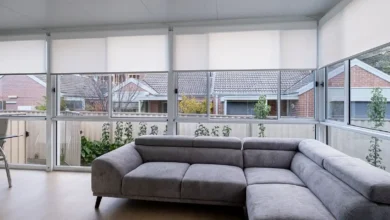
The concept of home has undergone significant changes in recent years. With the rapid pace of technological advancements and societal shifts, the idea of what constitutes a “modern” home has evolved to encompass a wide range of new and innovative features. From smart homes that can be controlled by voice commands to eco-friendly dwellings that prioritize sustainability, the modern concept of home has become more personalized and diverse than ever before. In this article, we will explore some of the key trends and concepts shaping modern homes, as well as their impact on our daily lives.
In this technological era, the concept of the modern home has evolved significantly. Here we shortlisted some modern concepts of home that will help you in home designing on the contemporary concept.
Energy Efficient
An energy-efficient home is designed to minimize the amount of energy needed to heat, cool, and power the home. By using efficient building materials, appliances, and technologies, an energy-efficient home can significantly reduce energy costs, minimize the carbon footprint of the home, and promote environmental sustainability.
An energy-efficient home is designed with a well-insulated building envelope to minimize heat loss in the winter and heat gain in the summer. This can include using high-performance insulation materials, such as spray foam insulation, and installing energy-efficient windows and doors.
The HVAC system, which stands for heating, ventilation, and air conditioning, is a critical component of an energy-efficient home. An energy-efficient HVAC system is designed to use less energy while maintaining a comfortable temperature inside the home. This can include using a high-efficiency furnace, heat pump, or air conditioner, and ensuring that the system is properly maintained and regularly serviced. Smart home technology, such as programmable thermostats and home automation systems, can help optimize energy consumption in an energy-efficient home. By using smart technology, homeowners can adjust their energy usage based on their preferences and daily routines.
Passive Design
Passive design is a concept used in modern home design that aims to maximize natural light and heat in a building while minimizing the need for artificial lighting and heating. Passive design relies on the building’s orientation, layout, and materials to create a comfortable and energy-efficient living space.
The building should be positioned to maximize natural light and heat gain during the winter months and minimize them during the summer months. This can be achieved by positioning the building to face south and designing windows and other openings to allow natural light and ventilation.
Multiroom System
The multiroom system is the latest technology, which is one of the constituent elements of the Smart Home concept. The ultimate goal of its creation is the transition to a completely new level of human life. This is a home entertainment network that allows you to watch a movie or listen to music with a single set of AV components in any area of your home. At the same time, the image and sound quality will be the highest.
For example, while taking a bath, you can enjoy your favorite tune or watch a movie, and then continue watching in the bedroom or any other room. When integrating multi-room with other intelligent systems in the house, you can show your friends photos on any of the screens, which will not prevent you from hearing the intercom signal through the speaker, regardless of the degree of remoteness. Is this not an increase in the quality of life while minimizing the cost of modern technology?
Comfortable Lighting
Modern technologies for controlling lighting and heating devices in your home allow you not only to configure their work while in the house, but also to subordinate it to pre-planned scenarios. Just imagine: you return late, and the lights are on in the windows, and the temperature and humidity are comfortable in the house! Everything is ready for a good rest.
Even if you are many kilometers away, you can control your home online. Plot lighting, garage door operation, and original mood lighting can be adjusted according to your wishes. If earlier this could only be dreamed of, today these fantasies are being successfully realized.
Weather in Your House
You can control the temperature in your home with this technology. The most important system is the regulation of indoor climate. At the same time, air conditioners, humidifiers, and ionizers work in a complex. This solution allows you to create your own microclimate in each room. Instruments are controlled by thermostats or valves.
It is convenient to control the system remotely (via a computer, phone, or remote control). After a long absence, a person does not come to a cold room, but to an apartment with a comfortable temperature.
Absolute Security
This technology allows you to control the functioning of the security system at a distance. The owner of the apartment, having gone on a business trip, can see and reconfigure any parameter in the house. Access control allows people with a special magnetic card to enter the premises.
When foreign objects appear, the system will report this fact to the owner of the property. The alarm is automatically triggered, and information about the penetration of private property is sent to the security post. The incident is recorded on video. With the help of the presented technology, the effect of presence is created. The system studies human habits and, based on this data, turns on and off the light in the apartment, draws the curtains, and turns on the music. This method of protection allows you to scare off intruders.
Final Words
Modern home concepts prioritize sustainability, energy efficiency, and eco-friendliness. The use of sustainable materials, energy-efficient appliances, passive design, and home automation technology are just some of the ways that modern homes can be designed to reduce environmental impact and enhance energy efficiency.
Overall, modern home concepts aim to create living spaces that are not only comfortable and functional but also environmentally conscious and energy-efficient. By embracing these concepts, homeowners can contribute to a more sustainable future while also enjoying the benefits of reduced energy bills and a more comfortable living environment.
We hope you found this article helpful. If you did, be sure to check out our blog for more great content like this.





